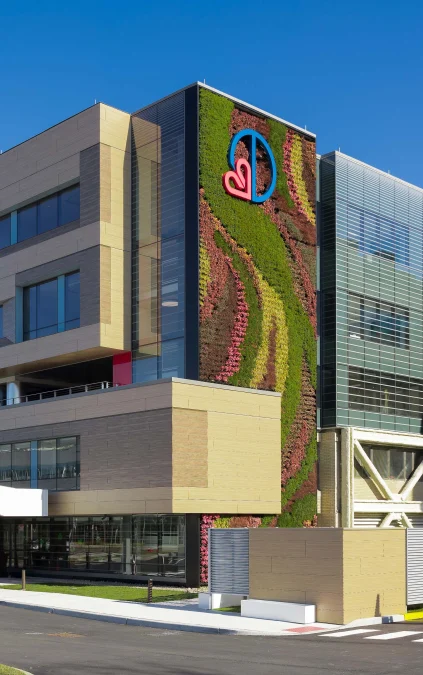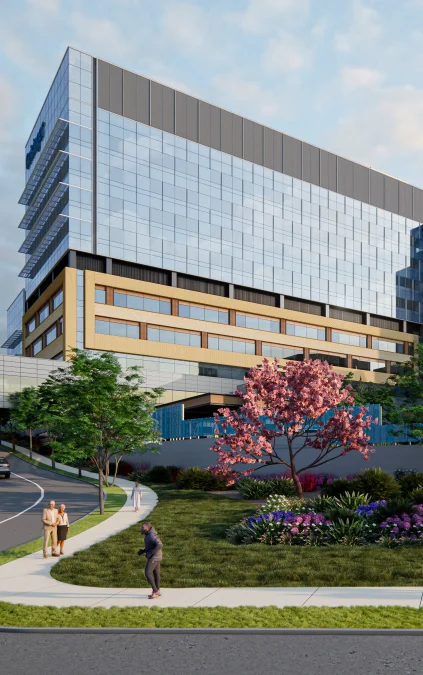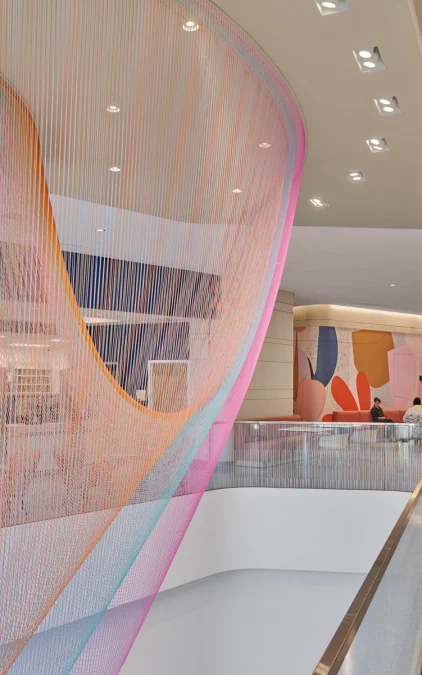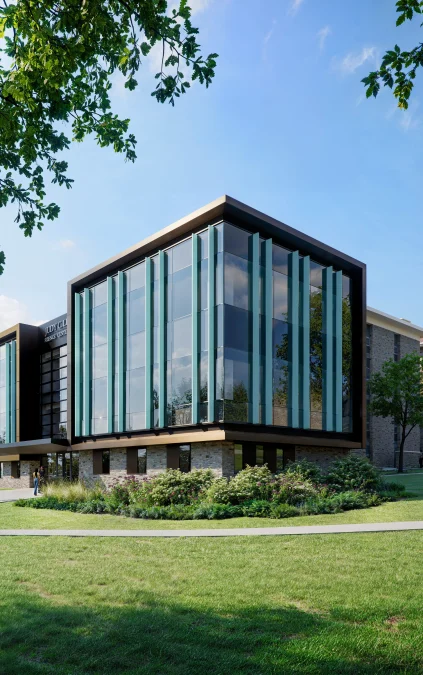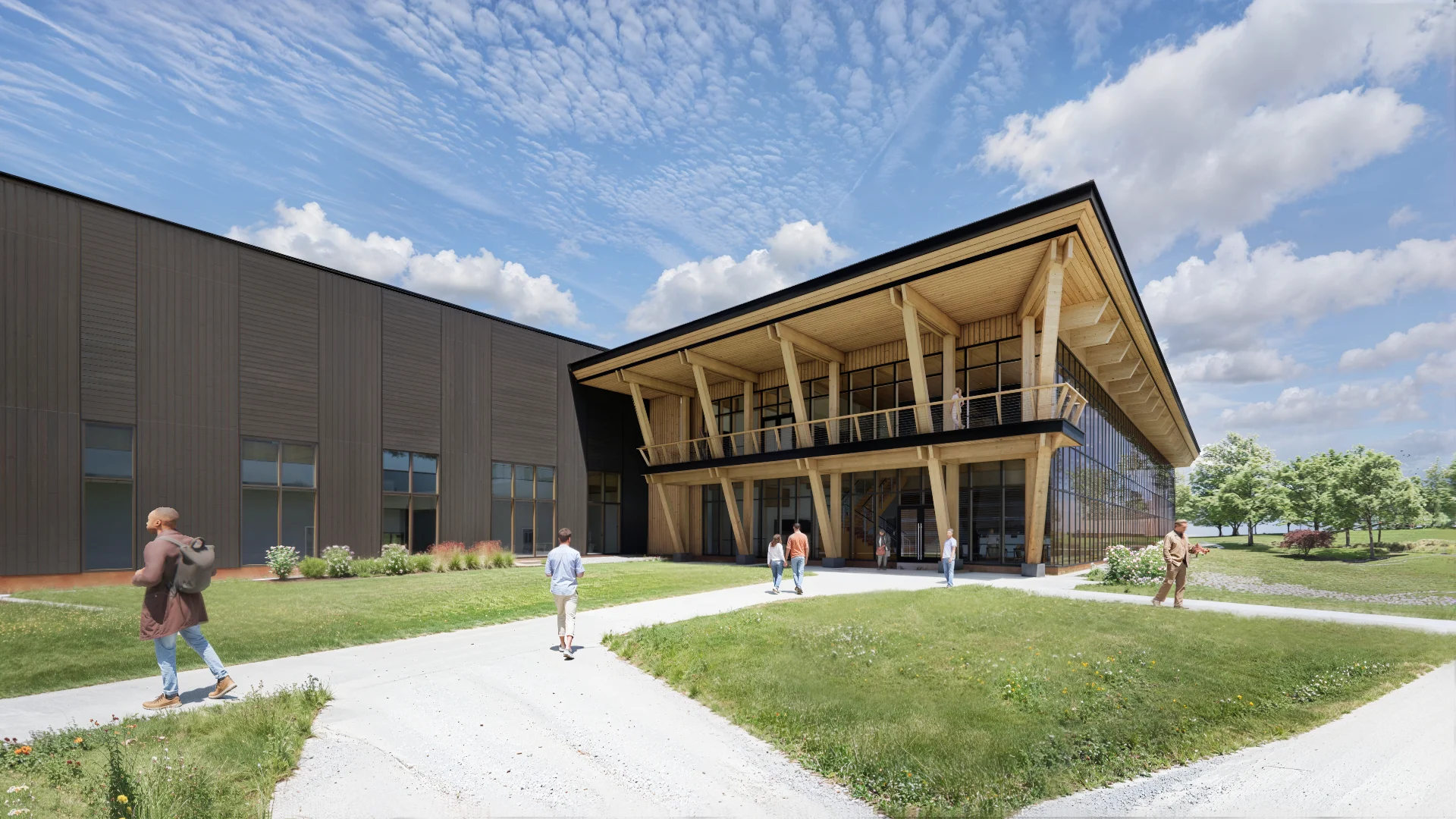
The Case for Mass Timber in Biopharma Facilities
With office vacancies on the rise and lending markets tightening, timber can be a differentiator across industries. Beyond its sustainability benefits, mass timber is a wise business decision, particularly for developers in competitive markets.
Organic material like mass timber is rarely the material of choice for commercial biopharma and GMP manufacturing facilities for a number of reasons: environmental contamination, structural spans, and performance. Our team recently presented a mass timber design at the International Mass Timber Conference in Portland, Oregon, to share how we reimagined the use of mass timber in the highly regulated, high-performance environment of biopharma manufacturing. The results are compelling: a hybrid structure that meets technical and operational demands and reduces embodied carbon to net negative levels.
As the pressure to reduce the built environment’s carbon impact intensifies, the benefits of mass timber become clear. Biotech companies like United Therapeutics (UT) understand this and are paving the way to more sustainable development. UT’s latest facility, WARP 10, expands on the well-established benefits of mass timber construction in office buildings and proves that these systems can be – and should be – applied to cGMP facilities.
Timber buildings attract higher lease and occupancy rates, especially among tenants who prioritize wellness, environmental responsibility, and aesthetics.
While some ask if they can afford to use mass timber, we ask, can you afford not to? Let’s break down the key drivers, design evolution, and lessons learned to explain why developers can’t afford to avoid mass timber any longer.
Rethinking the Design Priorities
Our team approached the design of WARP 10 with four guiding principles:
- cGMP manufacturing throughput supporting 50,000 patients annually.
- Schedule
- Construction cost
- Zero embodied carbon
These priorities weren’t theoretical — they shaped every design decision, from systems selection to structural strategies. Instead of treating sustainability as a bolt-on feature, we evaluated every element through these drivers. Could this change improve speed-to-market? Will it reduce the building’s carbon footprint and stay within the budget? Is it constructible within the project timeline?
This alignment between performance and sustainability set the tone for a different kind of conversation — one where mass timber emerged not as a compromise, but as a competitive advantage.
Design Evolution in Real Time
The success of this project hinged on early, continuous collaboration between EwingCole and our construction partner, DPR. Real-time cost and constructability feedback allowed the team to weigh sustainability decisions against budget and schedule impacts, with surprising results.
Take the curtainwall. A triple-glazed aluminum and steel system was initially considered but rejected due to its steep cost and carbon penalties. That’s why we pivoted to a mass timber curtainwall system with standard insulated glazing units. This approach offered a measurable reduction in embodied carbon and fit within the overall construction budget.
We also analyzed several regenerative and energy-reducing systems to supplement the building’s energy-intensive infrastructure. Instead of using electricity to reject heat to the atmosphere in the summer and then burning fossil fuel for heat in the winter, we designed a geothermal well field to store heat in the ground until needed. However, with a price tag of $5 million and an offset of only 10 percent of the building’s heating and cooling loads, the return on investment did not justify the cost. As is typical of most manufacturing facilities, the footprint of this building is substantial, and we were able to locate a 2.1 GWhr PV array on the rooftop, which, in conjunction with an existing array on this site, generates enough energy each year to offset 40% of the building’s annual energy use.
These are two of many similar cost-to-performance studies that were evaluated throughout design. The result is a smarter, more strategic sustainability strategy, informed by cost, constructability, and carbon.
Smart Programming + Structural Solutions
Designing with timber in a biopharma manufacturing facility posed unique challenges and demanded careful planning.
Traditional mass timber office buildings have 20-ft structural spans, which are insufficient for labs and manufacturing areas, which require a minimum of 33-ft spans. With careful consideration of vibration, deflection, member sizes, and connections, we designed spans that exceed 50 feet, supporting the substantial cleanroom and utility infrastructure.
To protect sensitive environments from exposure to organic materials, we placed laboratories in locations separated from exterior timber curtainwall within a clear span between mass timber columns, resulting in an entirely unencumbered floor area with ultimate flexibility. We separated cleanrooms from mass timber with a perimeter circulation corridor and by supplementing that structure with green steel within the cleanroom footprint.
By using steel only where necessary—such as the central utility plant and above the cleanroom —we could maintain both budget and sustainability targets while maintaining the separation between clean environments and organic materials.
The bottom line: thoughtful planning enables mass timber to work seamlessly alongside steel and concrete, even in the most demanding programmatic environments.
The Carbon Equation
One of the project’s most significant outcomes was its carbon profile. Through careful material selection and structural optimization, we reduced the building’s embodied carbon to a net negative. It is important to note, for this project, sequestration of carbon in the mass timber was factored as an offset to the upfront carbon.
Here’s how it breaks down:
- Mass timber sequestration: -3,325 metric tons of CO₂ equivalent (CO₂E)
- Concrete and steel emissions: +2,137 metric tons CO₂E
- Envelope and other systems: +1,011 metric tons CO₂E
- Total net embodied carbon: -38,000 kg CO₂E
When evaluating a typical building’s carbon profile by material (concrete and steel emissions, building envelope/other systems), the result is an average carbon intensity of 351 kg CO₂/m². This nets -2.15 kg CO₂/m² — a reversal that turns the building from a carbon source into a carbon sink.
These results weren’t incidental — they were intentional, and repeatable with the right strategy.
Carbon Impact ≠ Project Cost
One of the key insights from this project is that carbon and cost do not scale proportionally. In other words, the materials or systems with the largest environmental impact aren’t always the most expensive, and vice versa.
Take concrete, for example. It contributed the most to the project’s embodied carbon footprint, yet it wasn’t the costliest material in the overall construction budget. This disconnect highlights a critical opportunity: reducing a building’s carbon footprint doesn’t necessarily require increasing spending.
In fact, we found that targeted specification changes — such as selecting a lower-carbon material or optimizing a structural system — can significantly reduce carbon emissions with only marginal effects on project cost. These design decisions can yield a high return on investment when viewed through the lens of carbon accountability and long-term value.
Why Mass Timber
Timber buildings attract higher lease and occupancy rates, especially among tenants who prioritize wellness, environmental responsibility, and aesthetics. As demand grows for low-carbon buildings, investors and tenants seek assets that align with evolving ESG goals. Regulatory pressure is also increasing, with governments incentivizing lower embodied carbon and penalizing high-impact materials.
We already see how ESG expectations are transforming other sectors, and commercial real estate isn’t far behind. Mass timber offers developers a way to future-proof their assets and stand out in a risk-averse, oversupplied market.
It’s important to understand that timber isn’t an all-or-nothing proposition. Most mass timber buildings are hybrid structures, combining wood with steel or concrete where needed for performance. This makes timber a flexible, scalable solution that can be tailored to the specific needs of scientific, commercial, or institutional facilities.
In short, mass timber isn’t just a marketable material — it’s a market differentiator.




